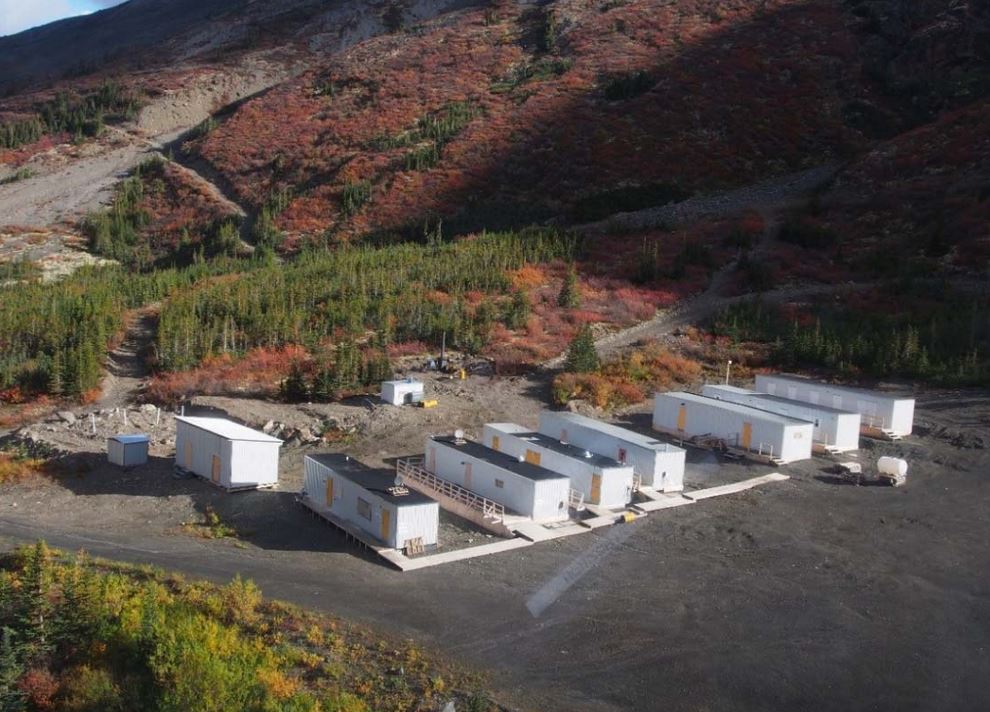Fireweed CEO pleased with zinc recoveries

Fireweed Zinc Ltd. [FWZ-TSXV; FWEDF-OTC] said Wednesday July 31 that testing results show 85% zinc recoveries are achievable at its Macmillan Pass zinc-lead-silver project in the Yukon Territory.
The company said that level of recovery was reported during an initial pre-concentration test using state-of-the art X-ray fluorescence (XRF) ore sorting technology on samples extracted from the project’s Boundary Zone.
The results are based on bench-scale test work conducted at the University of British Columbia on 436 rock samples representing a range of variability in the lithologies and grade distribution at the Boundary Zone. They suggest that it may be possible to significantly pre-concentrate low-grade material and reduce the processing costs at Boundary Zone with an XRF sorting system.
Typically, an XRF sorting system utilizes an XRF sensor to distinguish and measure surface metal abundances on rock pieces moving on an enclosed conveyor belt unit. XRF readings for each individual rock are then analyzed by high speed discriminating software to distinguish and flag rocks with metal values above and below a set threshold.
At the end of the conveyor belt, focused high pressure air jets or mechanical levers then separate the designated higher-grade rock pieces for processing and reject low-grade and waste pieces.
Fireweed shares advanced on the news, rising 6.56% or $0.04 to 65 cents. The shares are currently trading in a 52-week range of 56 cents and $1.39.
Located in the eastern edge of the Yukon, 350 km northeast of Whitehorse, Macmillan Pass is thought to be one of the world’s leading undeveloped zinc projects. According to a NI 43-101 technical report, the project hosts an indicated resource in the Tom and Jason zones of 11.21 million tonnes of 9.61% zinc equivalent or 6.59% zinc, 2.48 g/t silver, including 1.63 billion pounds of zinc, 610 million pounds of lead and 7.69 million ounces of silver.
On top of that is an inferred resource of 39.47 million tonnes of 10% of zinc equivalent, including 5.845 zinc, 3.14% lead, 38.15 g/t silver or 5.08 billion pounds of zinc, 2.73 billion pounds of lead and 48.41 million ounces of silver.
A preliminary economic assessment announced in May, 2018, says that material can sustain a mining operation for 18 years, one where average yearly contained metal production would be 85,000 tonnes of zinc, 48,000 tonnes of lead and 2 million ounces of silver.
The total project cost is estimated to be $1.05 billion, including pre-production capital expenditures of $404 million.
Fireweed has been working to demonstrate that Macmillan Pass is truly a district scale project, one that could eventually be a source of feed for a British Columbia smelting complex held by Teck Resources Ltd. [TECK.B-TSX; TECK-NYSE] in Trail, BC, the Canadian mining giant which recently increased its stake in Fireweed to 9.9%.
The project’s Boundary Zone is a discrete bulk-tonnage, advanced exploration target located 15 km northwest of the Jason zinc-lead-silver deposit.
In practical terms, the results released on Wednesday show potential to upgrade feed material from the test feed grade of 2.5% zinc to approximately 5%, with recovery of 80-85% of the zinc at low cost.
“These are excellent ore sorting results that have the potential to significantly impact the overall economics of the Macmillan Pass Project,” said Fireweed CEO Brandon Macdonald. “These results suggest that we may be able to reject 50% to 70% of the low-grade waste rock at low cost near a potential open pit operation at Boundary with less than 15% loss of zinc mineralization before material is transported to a central processing plant at Tom,” he said.
Macdonald went on to say that the company has begun the next step and moved a drill to Boundary to both confirm and step out from historic holes, as well as obtain a two-tonne sample to confirm that the ore sorting results released on Wednesday can be obtained on a larger scale and to provide additional material for metallurgical testing.
“If the larger test is successful, we can then incorporate the benefits of an XRF ore sorting system at Boundary into a revised PEA economic study along with upgraded information from recent drilling at Tom, Jason and End zones,” Macdonald said.
